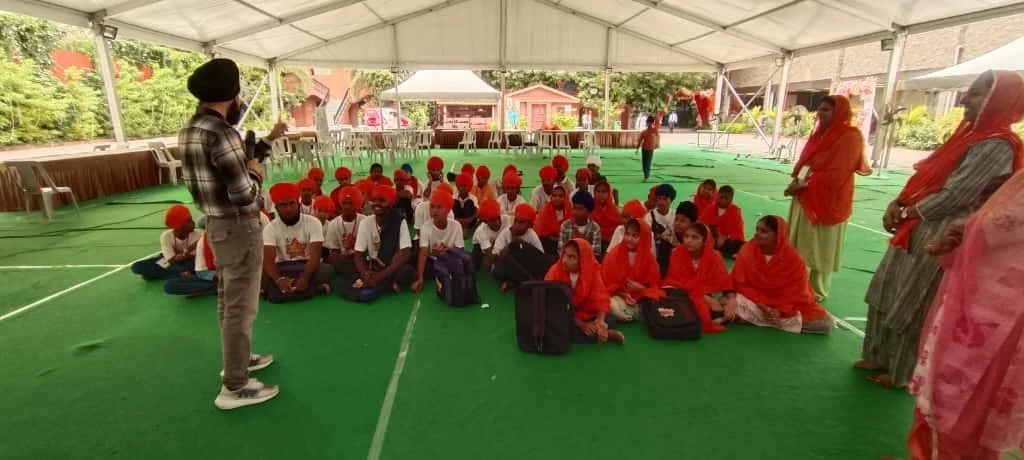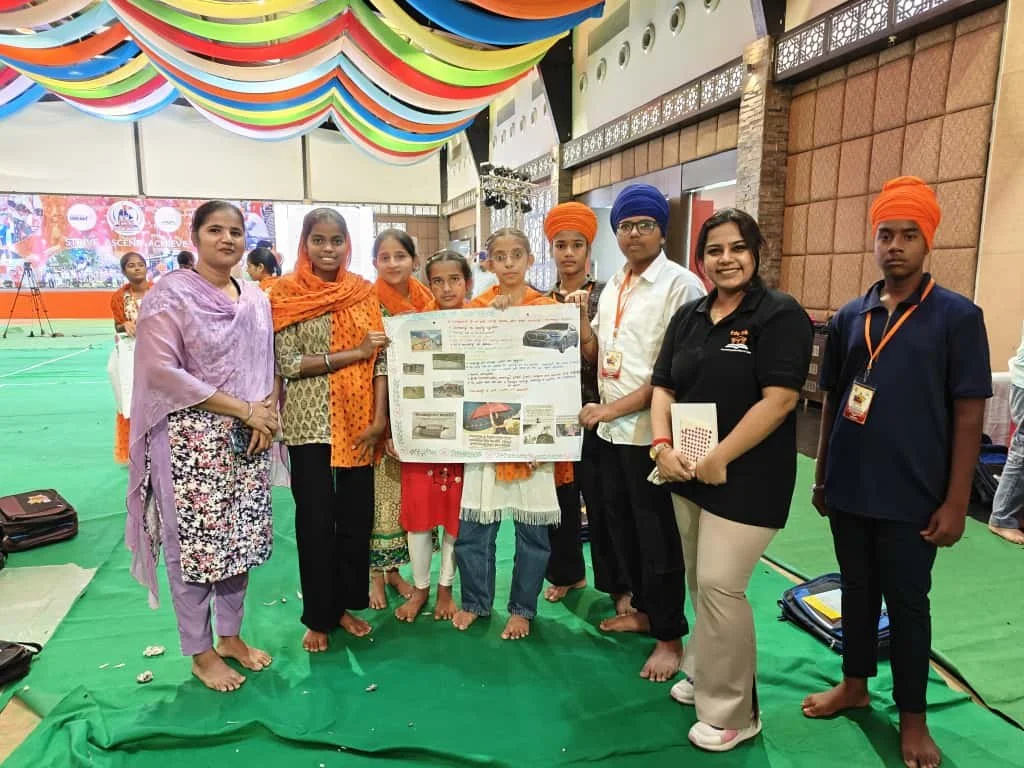Executive Summary
EduSikh, in strategic partnership with the Telangana Sikh Society (TSS), orchestrated a two-day engagement initiative in Hyderabad aimed at the Forgotten Sikhs of the Banjara community. Through four meticulously curated workshops, the programme endeavoured to foster confidence, creativity, and collaborative acumen among nearly 250 Sikh children aged eight to sixteen. Despite linguistic and contextual impediments, the sessions succeeded in awakening self-expression, encouraging gender-inclusive teamwork, and instilling an emergent sense of agency within a cohort that rarely experiences such platforms for growth.
Background & Rationale
The Banjara Sikh community remains conspicuously secluded and underserved, with limited access to structured opportunities for skill development or holistic empowerment. EduSikh’s mission to cultivate resilient, future-ready Sikh youth resonates with TSS’s grassroots outreach in Telangana, making this collaboration a compelling opportunity to provide inclusive learning experiences, nurture life skills such as communication and creative problem-solving, and reinforce a shared cultural identity within a marginalised demographic.
Programme Details
| Component | Description |
|---|---|
| Duration | 2 Days |
| Workshops | 4 |
| Participants | ~250 students |
| Age Group | 8–16 years |
| Community | Sikh children of the Banjara community |
| Facilitators | EduSikh Team in collaboration with TSS volunteers |
Workshops Conducted
The engagement featured four immersive sessions designed to ignite imagination and agency.
1. The Change-Makers Lab – Design Thinking for Social Impact introduced a simplified design-thinking framework, prompting participants to identify community challenges and devise innovative remedies.
2. Motivation, Discipline & the Power of Hard Work underscored the virtues of perseverance and self-discipline through compelling anecdotes and practical goal-setting.
3. Voices of Tomorrow – Storytelling for Confidence & Expression provided an expressive platform for narrative building, spontaneous skits, and public speaking, thereby strengthening communication and self-belief.
4. Dream in Colors, Build in Actions offered a vibrant art-based outlet, encouraging students to visualise aspirations and translate them into striking artistic compositions.
Observations & Impact
The initiative revealed both the latent potential and the unique challenges of this community. Initially, participants were markedly reticent, reflecting their limited exposure to interactive pedagogy. As the sessions progressed, however, hesitation gave way to enthusiasm. Children began sharing ideas, volunteering for group tasks, and collaborating across gender lines- an especially heartening development in a traditionally conservative setting. By the close of the programme, students confidently addressed their peers, presented skits, and proudly exhibited their artwork. Their creative output included intricate paintings and portraits, engaging reels, spirited bhangra performances and soulful songs, all of which testified to a rich reservoir of untapped talent.
Learnings & Challenges
| Challenge | Impact | Response/Adaptation |
|---|---|---|
| Language Barrier | Several instructions and conceptual explanations were not readily comprehended by participants. | Facilitators simplified their delivery, incorporated visual aids, and relied on TSS volunteers for live translation. |
| Contextual Gap | Certain activities presupposed prior exposure to structured learning, which many children lacked. | Sessions were recalibrated in real time, substituting complex tasks with culturally resonant, play-based alternatives. |
| Isolated Background | Limited familiarity with teamwork and public speaking initially constrained group participation. | Additional ice-breakers and energisers were deployed to build comfort and ease social interaction. |
These experiences underscored the necessity of flexibility, cultural sensitivity, and rapid adaptation in community-based interventions.
Key Insights
This engagement reaffirmed the extraordinary potential of the Banjara Sikh youth. When afforded a safe and supportive platform, they demonstrated striking creativity, intellectual curiosity, and resilience. The partnership between EduSikh and TSS proved indispensable, combining local credibility with structured facilitation to create an environment conducive to meaningful growth. The experience also highlighted the importance of sustained follow-up; periodic sessions focused on communication, digital literacy, and leadership could translate the confidence gained into long-term empowerment.
Recommendations for Future Programs
To deepen the impact of future initiatives, EduSikh recommends a pre-workshop orientation for local facilitators to bridge linguistic and cultural gaps; the preparation of bilingual materials and visual cue cards to aid comprehension; a phased skill-building curriculum beginning with foundational confidence games and storytelling before introducing advanced concepts such as design thinking; and the establishment of a mentorship network wherein older Sikh youth can guide younger participants, ensuring continuity and sustained engagement.
Acknowledgements
EduSikh extends profound appreciation to the Telangana Sikh Society for its steadfast collaboration, to the local volunteers whose translation and logistical support proved invaluable, and to our facilitators Inderjit Singh, Ravinder Singh Banga, Jasmeet Singh and Ekta Kaur for their dedication and support. Special thanks to Mr. Paramjeet Singh for introducing all the participants to this culture of workshops and learning and most of all to the young participants, whose exuberance and openness transformed this programme into a memorable and transformative encounter.
Conclusion
The Hyderabad initiative reaffirmed EduSikh’s conviction that every child, irrespective of background, can flourish when provided encouragement, exposure, and a secure platform for self-expression. The success of these workshops lays a durable foundation for continued engagement with the Banjara Sikh community and offers a replicable model for similar outreach efforts across India.









